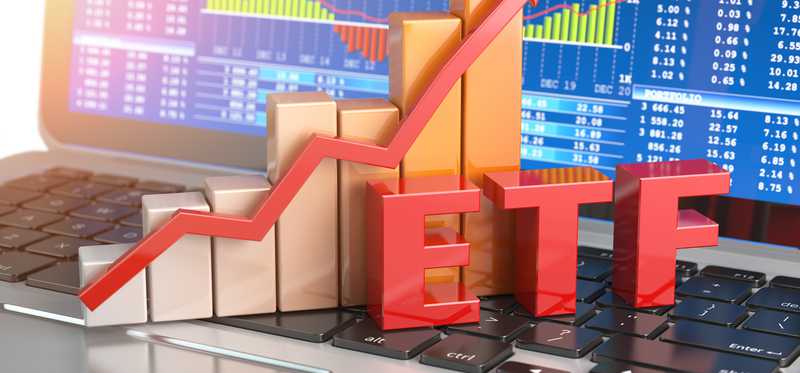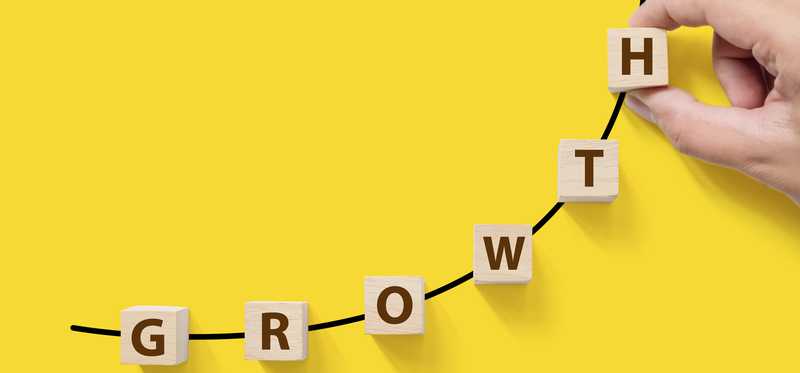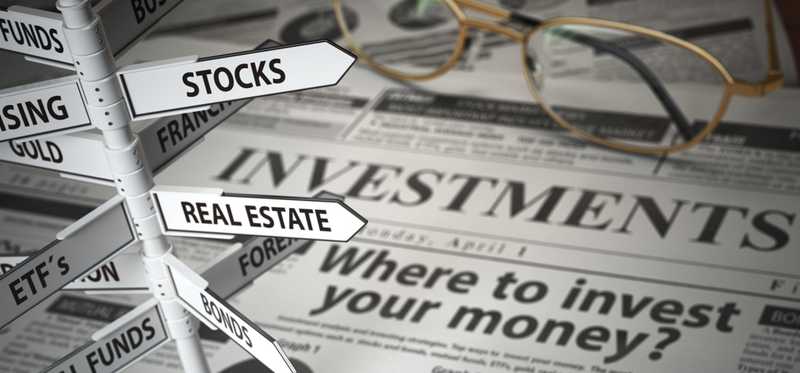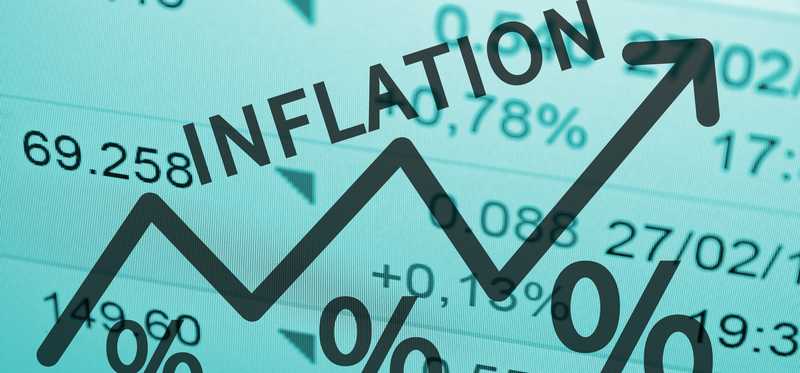These 14 ETFs Could Make a Complete Retirement Portfolio

These 14 ETFs Could Make a Complete Retirement Portfolio
Befitting of the all-in-one bill
There's more to investing than just picking great stocks and bonds. In fact, the biggest impact you're likely to have on your wealth has almost nothing to do with individual security selection. Two of the most important factors are making sure you pay yourself first so you save as much money as possible, and selecting an investment approach that you can actually stick to through thick and thin.
Which is why many investors try to find a single investment to buy that provides them with a complete retirement portfolio. That way they only have to worry about saving money. But you can't simply buy any old investment, you have to make sure you pick one that fits with your personality type so you don't jump ship when times get tough in the market (which will eventually happen).
Historically this has meant buying a mutual fund, but there's an increasingly long list of exchange traded funds (ETFs) that fit the bill too. ETFs are pooled investment vehicles like a mutual fund, but they generally track indexes. And because of their unique structure, they tend to have lower fees than mutual funds and can be traded all day long. You have to pay a commission each time you buy an ETF's shares, but brokers will often waive those fees (check with your broker on this), and overall they are an extremely useful and powerful tool for creating long-term wealth.
With that in mind, here's a list of all-in-one investment portfolios that are structured as ETFs.
Previous
Next

1. iShares Core Conservative Allocation Fund (AOK)
When it comes to cute tickers, iShares Core Conservative Allocation Fund (NYSEMKT: AOK) is up there with the best Wall Street has to offer. A conservative ETF that's "a-okay"... get the joke? But seriously, for risk averse investors, iShares Core Conservative Allocation Fund is a great place to start your search.
This fund invests in other ETFs sponsored by iShares, one of the largest ETF sponsors in the world. iShares, for reference, is owned by Wall Street giant BlackRock (NYSE: BLK). The ETF uses a broad stock/bond breakdown of 30%/70%. There's no scientific guidelines for asset allocation (though some on Wall Street would like you to think there is), but 70% in bonds is pretty conservative. Those bonds, meanwhile, are largely focused on the U.S. fixed income market, which accounts for about 60% of the total portfolio. The other 10% worth of bonds hails from international markets. The stock portion of the ETF is a bit more diverse, with 15% of the portfolio in large U.S. stocks, 10% in large foreign stocks, and the remaining 5% split between emerging markets and small- and mid-cap domestic stocks.
With such a large bond portfolio iShares Core Conservative Allocation Fund isn't going to knock your socks off on the return side of the equation. The fund has returned about 5.5% annualized over the past decade, but it has done so with a standard deviation (a measure of price volatility) that's about a third of the broader stock market's. The trailing 12-month yield, meanwhile, is around 2.7% (not huge, but we're in a low interest rate environment) and the expense ratio is a reasonable 0.25%.
Previous
Next

2. Invesco Conservative Multi-Asset Allocation ETF
Sticking with the conservative theme, the next option up for review is Invesco Conservative Multi-Asset Allocation ETF (NYSEMKT: PSMC). Compared to "AOK," Invesco's ticker choice here is kind of lame. But you shouldn't pick an ETF, or any investment, because of its ticker. That's like selecting a team to win the Super Bowl based on how much you like its uniform.
Invesco is another large asset manager on Wall Street that has expanded into ETFs in a sizable way. Invesco Conservative Multi-Asset Allocation ETF is the most conservative of the balanced ETFs it offers. It is different from the iShares fund in that Invesco Conservative Multi-Asset Allocation ETF uses an active management approach. That means it has set target ranges within which its portfolio allocations live. On the bond side the goal is between 65% and 95% of the portfolio. On the stock side the goal is the inverse, 5% to 35%. Between 3% and 20% of the portfolio is expected to be invested in foreign assets (both stock and bonds).
The ETF invests in other ETFs sponsored by Invesco. However, it's approach is far more granular, with assets spread across 15 ETFs. And with an active approach, expect the actual amount in each fund to vary with what the managers see going on in the market. The expense ratio is 0.39%, which is relatively high here, but you are paying for a lot more portfolio movement. The ETF's performance history is kind of short, since it only opened in 2017, so there's not much to go on and it would be hard (and perhaps unfair) to compare a year or so of performance to a fund with a decade of history behind it. The trailing yield, meanwhile, is around 4.6%, which is pretty compelling but, again, not based on much history.
All in, investors here will be taking a leap of faith with a short history and an active investment approach. However, the approach is generally reasonable and might be appropriate for investors who don't like the idea of putting their money on complete autopilot.
Previous
Next

3. iShares Core Moderate Allocation Fund
The first two funds were both based on a conservative approach. Next up on the risk spectrum is iShares Core Moderate Allocation Fund (NYSEMKT: AOM). To state what should probably be obvious, this fund takes a little more risk than the previous two ETFs. In this case, the fund targets a 60% bonds and 40% equities mix. Around two-thirds of the portfolio is in domestic assets. Like its sister iShares Allocation Funds the portfolio is filled with other iShares ETFs. Most of the fund is in large domestic and developed market foreign stock and bond indexes. The only notable deviation is the around 5% of assets earmarked for emerging market stocks and small and mid-cap domestic equities.
The fund's expense ratio is 0.25%. The 10-year annualized return is about 6.5%. And the fund's standard deviation is 5.6, a little less than half that of the S&P 500 Index. These numbers are pretty much what you would expect relative to the Conservative fund, with slightly more volatility and slightly higher returns. The dividend yield is 2.4%, a little lower than iShares' Conservative offering. All in, it is a solid ETF for moderate investors seeking an index-based approach in an all-in-one ETF.
Previous
Next

4. Invesco Moderately Conservative Multi-Asset Allocation ETF
Switching gears only slightly again, Invesco Moderately Conservative Multi-Asset Allocation ETF (NYSEMKT: PSMM) is also focused on serving the needs of investors only willing to take on moderate levels of risk. However, like its brethren all-in-one funds from Invesco, this ETF takes an active approach to its portfolio. The allocation guidelines here are 45% to 75% fixed income, 25% to 55% equities, and 5% to 25% in foreign assets. Not a huge change from the Moderate incarnation, but definitely a little more aggressive. The actual allocation to each of these broad categories, and the Invesco ETF that make up the underlying portfolio, are actively managed.
The ETF's expense ratio is 0.39%. It was only opened in 2017, so it has a very short history. The trailing 12-month yield is around 2.7%, which is fairly close to what iShares Core Moderate Allocation Fund is offering. That is worthy of note only because of the much larger discrepancy between the conservative versions of these allocation ETFs from iShares and Invesco. It's too early in Invesco Moderately Conservative Multi-Asset Allocation's life to discern if the yield here is about what you should expect or if it is low, but it definitely speaks to the differences between the Invesco Allocation ETFs.
Previous
Next

5. iShares Core Growth Allocation ETF
Now that we've covered moderate risk, it's time to shift toward growth, with iShares Core Growth Allocation ETF (NYSE: AOR). Like its iShare siblings it invests in other iShare ETFs, only this time the bond/stock mix is tilted toward equities, with bonds at around 40% of the portfolio and stocks at 60%. This is basically a rule of thumb breakdown on Wall Street that is believed to be appropriate for most investors. Foreign stocks and bonds make up around 40% of the overall portfolio. Roughly 9% of the portfolio, combined, is in the higher risk emerging market and small and mid-cap U.S. sectors.
The fund's expense ratio is 0.25%. The 10-year annualized return is about 8.5%. And the fund's standard deviation is around 8, which is about two-thirds that of the broader stock market. These risk and return statistics make sense based on the portfolio here and fit well within the iShares Allocation family of ETFs. The trailing 12-month dividend yield is 2.3%.
Previous
Next

6. Invesco Balanced Multi-Asset Allocation ETF
Moving to the comparable Invesco fund we see a notable difference between the iShares naming convention and the Invesco naming convention. Invesco Balanced Multi-Asset Allocation ETF (NYSEMKT: PSMB) has a portfolio target of 25% to 55% in bonds and 45% to 75% in stocks, with between 10% and 30% of the portfolio in foreign investments. That's comparable to what iShares calls "growth," but here is just considered "balanced." It's a nuance, but it's worth pointing out because it will have more meaning when comparing the two ETF families on the next step of the risk spectrum. Like the other active Invesco Allocation ETFs, the fund uses an active approach, so the actual Invesco ETFs that make up the underlying portfolio and the allocations within the broad targets will change based on management's market outlook.
Interestingly, this ETF's expense ratio is 0.40%, a basis point higher than its sibling funds. It's not a difference worth thinking too deeply about, just an oddity. It is probably related to the actual allocations within the portfolio or maybe even just a rounding issue. Like its sister ETFs, Invesco Balanced Multi-Asset Allocation ETF was created in 2017, so it doesn't have enough performance history to provide a good comparison to the similar iShares fund. The same holds for standard deviation. The trailing 12-month yield is around 2.6%. As with all of the Invesco ETFs here, you are betting on the actively managed allocation investment approach because there's not a whole lot else to go on.
Previous
Next

7. iShares Core Aggressive Allocation Fund
Closing out iShares' collection of risk-based allocation funds is its most aggressive offering, the aptly titled iShares Core Aggressive Allocation Fund (NYSEMKT: AOA). The ETF's basic breakdown is 20% fixed income and 80% equities. Roughly 55% of the portfolio is in domestic securities. Although this is indeed a fairly aggressive allocation mandate, it isn't unreasonable and even moderate investors with a long time to go before retirement could comfortably own a portfolio like this. The most notable difference between this ETF and its sister iShares funds is that around 15% of the portfolio is dedicated to the higher risk emerging market and small and mid-cap asset classes.
The fund's expense ratio is 0.25%, just like all of the other iShares offerings here. The trailing 12-month yield is roughly 2.1% and the annualized return over the past decade is 10.7%. Its standard deviation is a little below that of the S&P 500 Index, which makes sense given the small bond component. All in, the fund does exactly what you would expect based on its name.
Previous
Next

8. Invesco Growth Multi-Asset Allocation ETF
We have now stumbled upon a small complication if you are comparing the risk-based products from iShares to those offered by Invesco. Invesco Growth Multi-Asset Allocation ETF (NYSEMKT: PSMG) is the highest risk ETF in Invesco's offering list, while "growth" at iShares is effectively one step below the highest risk option, which is titled "aggressive." Comparing Invesco Growth Multi-Asset Allocation ETF to iShares Core Growth Allocation ETF will lead to spurious conclusions. Make sure you are comparing apples to apples here.
Invesco Growth Multi-Asset Allocation ETF has a portfolio target of 5% to 35% in bonds and 65% to 95% in stocks, with between 15% and 35% of the portfolio in foreign investments. As noted, that's basically akin to the allocation targets that iShares Core Aggressive Allocation ETF follows and is the most aggressive of the allocations in the Invesco risk-based balanced ETF universe. As you should probably be expecting at this point, the fund uses an active approach. The Invesco ETFs that make up the underlying portfolio and the allocations within the broad targets will change based on management's market outlook.
The ETF's expense ratio drops back to 0.39% like all but one of the other ETFs in this series. Just like all of its sister funds, however, Invesco Growth Multi-Asset Allocation ETF was created in 2017. That means it lacks a long enough history to compare it to the similar iShares offering on performance and risk. The trailing 12-month yield is around 2.1%, which is a little above what the S&P 500 Index offers today. If you choose this ETF over the comparable iShares offering, you basically need to believe that an actively managed allocation approach is worth the higher costs involved because it will lead to superior results. Whether that's true or not, however, won't be clear for at least a few more years.
Previous
Next

9. iShares Morningstar Multi-Asset Income ETF
Now for a little bit of a change with iShares Morningstar Multi-Asset Income ETF (NYSEMKT: IYLD). As the name implies, this ETF is based on a Morningstar index. So while it is a balanced fund, it shouldn't really be thought of as existing within the risk-based group that iShares offers. It is its own beast. In this case the goal of the portfolio is a high level of income, which is also apparent from the name. The return of a cute ticker (i-yield) also gives a hint at the fund's income goal.
A fund of funds, all of the ETFs iShares Morningstar Multi-Asset Income ETF owns are within the iShares family. The ETF targets a 60% allocation to bonds, 20% to stocks, and 20% to what it describes as "alternative income sources." While most of the ETFs in the portfolio are clearly tilted toward income, the only ones that would fall under that last category as of mid-2019 appear to be an ETF focused on mortgage real estate investment trusts (REITs) and another with an emphasis on preferred shares. Nothing particularly crazy about either of those, though mortgage REITs are generally more risky than property owning REITs. About 50% of the fund is invested in domestic assets, with the rest invested overseas. That's also not outlandish, but perhaps more foreign exposure than most might expect.
The fund's expense ratio is fairly high by ETF standards at 0.60%. However, it lives up to the income mandate in a fairly substantial way, with a trailing 12-month yield of 5.1%. That's notably better than what any of the risk based ETFs iShares or Invesco offer. So for those looking to maximize their income, this might be a worthwhile choice. There's a couple of caveats to that statement, however. Over the trailing five-year period, it doesn't have a 10-year record yet, the ETF has an annualized return of just a touch under 4%. That's not great even though its standard deviation is roughly half that of the broader market, since an investment in an S&P 500 Index would have returned over 10%. Yes, the income the fund generates is notable, but you are paying a lot for that income and not getting much in the way of total return (which assumes the reinvestment of dividends). This isn't a great choice for most investors, unless you are heavily biased toward income generation.
Previous
Next

10. Invesco Zacks Multi-Asset Income ETF
As if on cue, Invesco has an offering to match the Morningstar derived iShares ETF, only this one is backed by data from Zacks. Invesco Zacks Multi-Asset Income ETF's (NYSEMKT: CVY) goal is income generation. This ETF, however, does not invest in other ETFs. It buys individual stocks, REITs, limited partnerships, and closed-end funds (CEFs). It has heavy weightings in sectors that tend to have high yields, like banking, utilities, and real estate. It takes a vastly different approach to building its portfolio than the comparable iShares fund and any of the risk based balanced ETFs.
The end result of all of this is a trailing 12-month yield of around 3.1% and an expense ratio of 0.80%, which is extremely high for an ETF. The standard deviation, meanwhile is a touch higher than that of the broader market. Annualized total return over the past decade was a solid 10% or so, but it's hard to suggest that this fund is living up to the income billing.
From a structural point of view Invesco Zacks Multi-Asset Income ETF is an interesting fund. However, from an investment standpoint most would likely be better off considering other options before this one.
Previous
Next

11. First Trust Multi-Asset Diversified Income ETF
Finally an ETF that doesn't include the name iShares or Invesco... First Trust Multi-Asset Diversified Income ETF (NYSEMKT: MDIV) hails from a fund sponsor that has a history of providing niche investment products. Although ETFs are pretty mainstream, First Trust has a notable stable of CEFs and unit investment trusts, both pretty obscure areas of Wall Street. Multi-Asset Diversified Income ETF kind of keeps with that theme and is something of an oddball on this balanced fund list.
The ETF, as its name implies, focuses on income. It owns a mix of high yield debt ETFs, limited partnerships, REITs, preferred stocks, and dividend paying stocks from a range of industries. Its target is to have about 20% of assets in each of those five assets classes.
Like the Invesco Zacks Multi-Asset Income ETF there's a lot going on within the fund. With a trailing 12-month yield of around 5.2%, however, First Trust Multi-Asset Diversified Income ETF does a better job of living up to its income mandate. With a five-year annualized return of just 2.5% or so, however, it hasn't exactly been a great investment (the S&P 500 index was up around 10% over that span). And while the standard deviation is just two-thirds that of the broader index, the return shortfall is pretty big. On top of that the ETF's expense ratio is a heavy 0.71%. Unless you are willing to pay up for income, this ETF is probably best left to others.
Previous
Next

12. SPDR® SSGA Income Allocation ETF
Holding on to the income space for one more fund, it is time to shift gears to a new ETF sponsor -- State Street. While not a household name, State Street is a well known name on Wall Street, handling back office needs for many of the market's biggest players. State Street also happens to control the SPDR family of ETFs and was the first company to launch an ETF in the U.S. market, SPDR S&P 500 ETF (NYSEMKT: SPY). So it is a pretty big player in the ETF market even if they don't advertise their name.
SPDR® SSGA Income Allocation ETF (NYSEMKT: INKM) is another fund that offers up a cute ticker, with "INKM" hinting strongly at the word "income." That, of course, is a key goal for the ETF, with it specifically focused on domestic government and corporate bonds, convertible and preferred securities, global REITs, and dividend paying stocks. All of these asset classes are known for income. It owns other ETFs, the majority of which are from the SPDR family, so the list is back to fund of funds offerings. The allocation between each of the asset categories it targets, however, depends completely on management's view of the future, State Street provides no set targets in the fund's prospectus.
The ETF's yield is around 4.7%, so it does achieve its income goal. However, its annualized return over the trailing five years is only around 5%. And the expense ratio is 0.50%, so it isn't cheap to own. That said, the standard deviation over the past five years is a little more than half the index's level, so the return doesn't look quite so bad on a risk/reward spectrum since the market's return over the period was in the 10% area. Still, the active management just doesn't seem to add enough value to justify the cost. There are other options in the balanced ETF space that appear more compelling.
Previous
Next

13. SPDR® SSGA Global Allocation ETF
After that quick trip into income focused names, it's time to broaden out again, but still sticking within the State Street group. SPDR® SSGA Global Allocation ETF (NYSE: GAL) owns a collection of ETFs that are largely, but not exclusively, from its own collection of sponsored products. The use of the word "global" in its name is lived up to with a goal of having at least 30% of assets in "securities of issuers economically tied to countries other than the U.S." That's important wording, because it is a slightly liberal view of international investing that means a security can be listed in the U.S. so long as the company makes most of its money elsewhere. On a broader level it targets a 40% bond/60% stock asset mix. There's wiggle room in all of this, however, because the allocations are actively managed and the actual percentages will ebb and flow a little over time.
With an expense ratio of 0.35% it sits toward the high end of the ETF cost spectrum, but it is not unreasonably expensive. That said, the yield is a modest 2.6% and trailing five-year performance is just 4.3% annualized. And while the standard deviation is about two-thirds that of the broader market, this ETF doesn't really stand out from the pack here in any way.
Previous
Next

14. SPDR® SSGA Multi-Asset Real Return ETF
Closing out the list of 14 ETFs is another State Street product, SPDR® SSGA Multi-Asset Real Return ETF (NYSEMKT: RLY). The goal of this fund is very different from all of the other ETFs examined so far. The ETF is meant to provide returns that can withstand the ravages of inflation, which is the tendency of prices to rise over time. To achieve this it invests in "real" assets, including inflation protected securities, global real estate securities, commodities, and publicly traded companies that operate in the natural resources and commodity sectors. The portfolio is filled mostly with SPDR offerings, but it also owns some ETFs sponsored by other companies. Although it owns a fair number of ETFs, it's investing mandate keeps it heavily concentrated in a relatively small slice of the investment world.
With an expense ratio of 0.50% the fund isn't cheap, but also isn't the most expensive on the block. However, it is only appropriate for investors concerned that inflation will pick up materially in the future. Inflation hasn't been an issue for some time, which helps explain the fund's annualized five-year return of -2.0%. The yield, meanwhile, isn't any more exciting at around 2.8%. If you add in the fact that the standard deviation is basically the same as that of the S&P 500 Index over the trailing five year span, you can see that this hasn't been such a great investment option for investors. But if you are worried about inflation, SPDR® SSGA Multi-Asset Real Return ETF does provide global exposure to a collection of real assets that might otherwise be difficult to assemble. In other words, it fills an interesting niche.
Reuben Gregg Brewer has no position in any of the stocks mentioned. The Motley Fool has no position in any of the stocks mentioned. The Motley Fool has a disclosure policy.
Previous
Next
Invest Smarter with The Motley Fool
Join Over Half a Million Premium Members Receiving…
- New Stock Picks Each Month
- Detailed Analysis of Companies
- Model Portfolios
- Live Streaming During Market Hours
- And Much More
READ MORE
HOW THE MOTLEY FOOL CAN HELP YOU
-
Premium Investing Guidance
Market beating stocks from our award-winning service
-
The Daily Upside Newsletter
Investment news and high-quality insights delivered straight to your inbox
-
Get Started Investing
You can do it. Successful investing in just a few steps
-
Win at Retirement
Secrets and strategies for the post-work life you want.
-
Find a Broker
Find the right brokerage account for you.
-
Listen to our Podcasts
Hear our experts take on stocks, the market, and how to invest.
Premium Investing Services
Invest better with The Motley Fool. Get stock recommendations, portfolio guidance, and more from The Motley Fool's premium services.